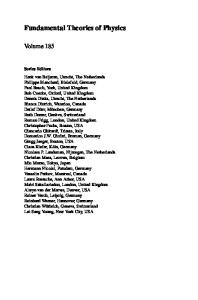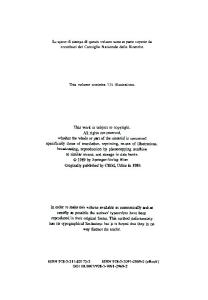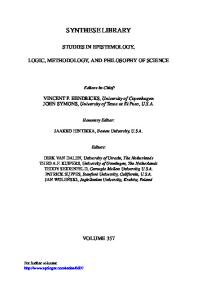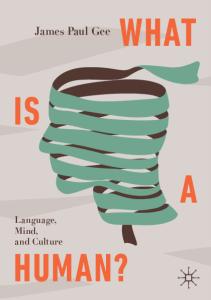Luminescence in europium-doped titania: Part II. High concentration range of Eu 3+
- PDF / 410,552 Bytes
- 8 Pages / 612 x 792 pts (letter) Page_size
- 78 Downloads / 267 Views
In continuation of our previous work [J. Ovenstone, P.J. Titler, R. Withnall and J. Silver, J. Phys. Chem. B, 105, 7170 (2001)] we report the following results. Amorphous europium-doped titania phosphors (Ti1−3xEu4xO2) were prepared with europium concentrations from x ⳱ 0.000397 to x ⳱ 0.143. From investigations using photoluminescence (PL), it was deduced that the luminescence was due to a europium/titanium compound rather than from a europium-containing precipitate dispersed within a titania precipitate. PL brightness was shown to increase linearly to a concentration of x ⳱ 0.0159 before quenching began, and the rate of increase of brightness dropped. Brightness then continued to rise (almost linearly) from x ⳱ 0.0238 to x ⳱ 0.143. Under electron beam excitation these phosphors showed weak cathodoluminescence; for the amorphous materials no quenching was observed. For the crystalline materials (prepared by annealing the amorphous materials at high temperature) no red luminescence was observed above a concentration of x ⳱ 0.00318; however, some faint red luminescence was observed below this concentration. In addition, some faint blue emission was observed in crystalline samples that had no red luminescence, indicating the presence of small amounts of Eu2+ ions. This was attributed to reduction of the Eu3+ ions in the electron beam. Europium doping was shown to increase the size of the band gap in the amorphous materials, but had little effect on the band gap of the crystalline powders.
I. INTRODUCTION
Europium is a well-known activator for phosphor materials. The first commercial cathode ray tube (CRT) red phosphor was yttrium vanadate doped with europium, which was then superseded by yttrium oxide europium. Today yttrium oxysulphide doped with europium is the most widely used red phosphor in CRTs. In all these examples, the europium is doped into the host lattice as Eu3+ ions. Europium can, however, also be present as Eu3+ ions, but this results in the generation of a different color (usually blue).1 Eu3+, as with other rare earth M3+ activators, manifests narrow lines in its emission spectra. The red color of the emission is mainly due to the 5D0 to 7F2 radiative relaxation, which occurs after excitation to the 5D0 state from the ground and low-lying states. The position of this line is affected by the host lattice of the phosphor material, as the host changes the crystal field experienced by the f electrons. Since the f electrons are heavily shielded from the environment by the outer electrons, the shifts in the emission peak are only slight as the host lattice changes. The main emission line characteristically comes in the region of 615 nm.2 2524
http://journals.cambridge.org
J. Mater. Res., Vol. 17, No. 10, Oct 2002 Downloaded: 14 Mar 2015
The high photocatalytic activity of titania3 has led us to investigate it as a potential host lattice for europium for application as a phosphor material.4 Titania has three naturally occurring polymorphs, anatase, brookite, and rutile. The first two are kinetically st
Data Loading...











